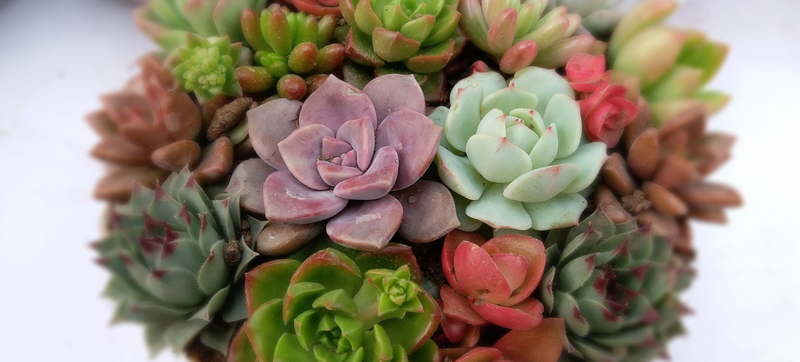Se pot mânca ?

Research indicates that there are several types of succulents you can eat. Let’s take a look at edible succulents.
, but they provide some nutritional elements to your diet. Some are said to lower cholesterol and blood pressure and reduce coughing. Here are some of the types of succulents you can eat:
Sedum: Among the largest group of succulent plants, there are likely several types of sedum in your collection. These low-maintenance specimens are said to be edible. The yellow-flowering types should be cooked before consuming. You may add leaves, flowers, stems, or even seeds to salads or smoothies. These have a slight peppery taste. Some are bitter. This bitterness can be reduced by stir-frying or steaming. Prickly Pear Cactus: A favorite ornamental plant, prickly pear is known for its juicy and edible fruits. Peel and eat raw or grilled. This provides the body with vitamin C and beta-carotene that improves vision and decreases inflammation. The pads are edible too. Dragon Fruit: Another commonly grown succulent is the pitaya dragon fruit. Scoop out the white pulp and consume raw. You may also add to smoothies or soups. Antioxidant rich and promotes good bacteria in the gut. Salicornia: This succulent plant can be eaten raw or cooked. Similar to spinach, it can be eaten the same way. Sauté it or add it to salads uncooked. Purslane: Whether you think of it as a weed in the garden or choose to grow it, purslane (Portulaca oleracea) makes a nice substitution for spinach, eaten raw or cooked. Eating succulent plants may not be the best result of your time and the care spent on growing them. However, it is an interesting fact and something you may want to share with succulent-growing friends. If you do choose to sample your succulent leaves, be sure to research first to see how they should be prepared. Disclaimer: The contents of this article is for educational and gardening purposes only. Before using or ingesting ANY herb or plant for medicinal purposes or otherwise, please consult a physician, medical herbalist or other suitable professional for advice.
Agave can be used to produce everything from alcoholic beverages to rugs and rope. The liquid extracted from Agave tequilana is used in the fermentation of tequila. The stiff, durable fibers from the leaves of Agave sisalana are traditionally used to produce rope and twine. Nowadays, the fibers are also used to make everything from rugs and cloth to footwear and hats.